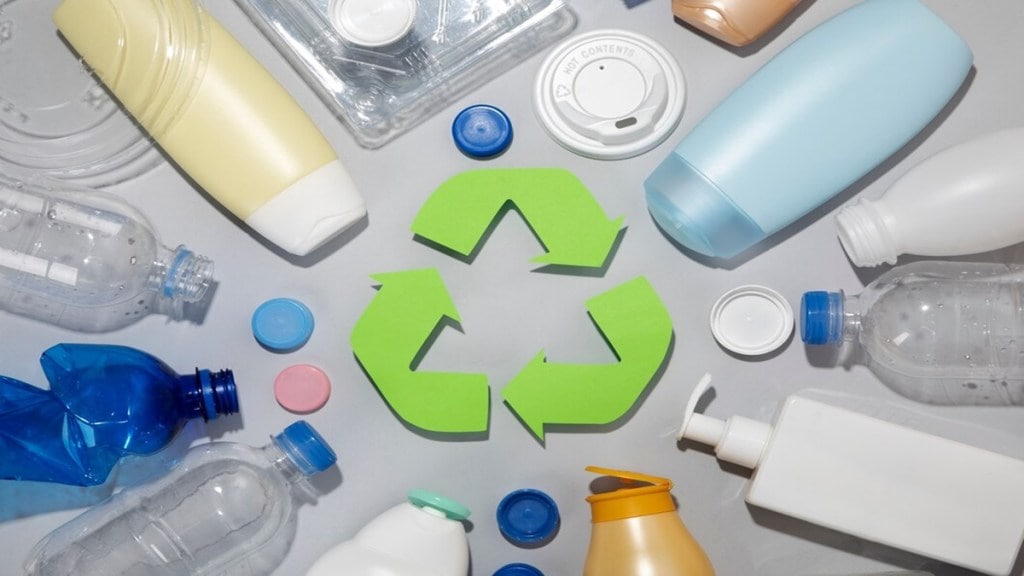By Dr. Sanjay K. Nayak
The government’s proposal to increase customs duty on non-biodegradable plastics to 25 percent in the Union Budget announced in February 2025 is a step towards encouraging production of environment-friendly alternatives. With states like Uttar Pradesh and Kerala already taking the bold stride of setting up bioplastic park and rolling out bio-bottles for packaged drinking water, India has started demonstrating a growing appetite for bioplastic products. Poly Lactic Acid (PLA) has emerged as a groundbreaking biomaterial that is transforming the bioplastics industry. PLA offers a game-changing solution as a bio-based and compostable alternative to traditional petroleum-based plastics. Certified to IS/ISO 17088 standards, PLA tackles pressing sustainability issues while opening up new economic prospects. Derived from renewable resources like sugarcane, corn starch or cassava, PLA exemplifies significant progress in sustainable materials science. Its production begins with the fermentation of agricultural products or by-products into lactic acid, which is then polymerized into PLA. Unlike traditional plastics that depend on finite fossil fuels, PLA’s bio-based origin ensures a reduced carbon footprint and aligns with global sustainability goals. It is expected that in this age of heightened environmental consciousness, bioplastics will go a long way to ensure a sustainable future.
PLA’s ability to integrate agricultural waste into the value chain can create dual benefits first with farmers gaining additional income streams, and second is industries achieving a sustainable supply of raw materials. This synergy fosters a resilient economic cycle connecting agriculture and industry. PLA production consumes 65% less energy than traditional plastics manufacturing, which indicates significant reduction in operational costs and emissions. With advancements in fermentation techniques and polymerization processes, enhancement in efficiency and yielding of higher-quality products with minimal environmental impact have been noticed.
The adaptability of PLA has revolutionized its integration across industries such as packaging, textiles, medical devices, and 3D printing. This diversification not only expands market opportunities but also mitigates risks by reducing reliance on single-application markets. Additionally, PLA’s consistent molecular structure supports stringent quality control, enabling reliable performance across diverse applications.
India, with its agricultural abundance needs sustainable solutions too. It positions well to harness the benefits of PLA in advancing its circular economy agenda. By utilizing sugarcane, cassava, and other agricultural feedstocks, India can promote the localized production of PLA, reducing reliance on imports and creating new economic opportunities for farmers and industries alike. Integrating PLA production within existing agro-industrial frameworks—such as co-locating bioplastic plants with sugar mills—can optimize resource utilization while reducing waste. Furthermore, scaling up PLA-based solutions can help India transition away from single-use plastics, addressing the twin challenges of plastic pollution and resource inefficiency. With proper investments in recycling and composting infrastructure, PLA can become a cornerstone of India’s sustainable development goals, driving innovation, employment, and environmental stewardship.
With its lightweight nature and stability under normal conditions, PLA simplifies transportation and reduces associated costs and carbon emissions. Unlike materials that require specialized storage, PLA supports seamless integration into existing logistics frameworks. PLA’s most compelling advantage lies in its end-of-life management. Under industrial composting conditions, PLA’s degradation process allows it to seamlessly return to nature, replenishing the soil with essential nutrients and completing a truly circular earth-to-earth lifecycle. Coupled with emerging recycling technologies, PLA offers a sustainable alternative to address global waste challenges while creating new business opportunities in waste recovery and composting.
Developing robust infrastructure for PLA disposal and composting is critical to realizing its environmental potential. Building specialized facilities and raising awareness about proper disposal practices will help optimize PLA’s lifecycle benefits.
As a renewable, efficient, and versatile biopolymer, PLA represents a cornerstone in the evolution of sustainable materials. Its ability to align environmental and economic objectives makes it a pivotal player in advancing the bioplastics industry. By leveraging India’s agricultural strengths, fostering innovation, and investing in infrastructure, PLA can significantly contribute to the country’s circular economy agenda. The global momentum behind PLA underscores the potential of sustainable alternatives to conventional plastics. With continued advancements in technology and strategic investments, PLA is set to drive transformative change in materials science and industrial production, propelling us toward a more sustainable future.
The writer is former director general, Central Institute of Petrochemicals Engineering & Technology (CIPET), DCPC, Govt. of India.
Disclaimer: Views expressed are personal and do not reflect the official position or policy of FinancialExpress.com. Reproducing this content without permission is prohibited.

